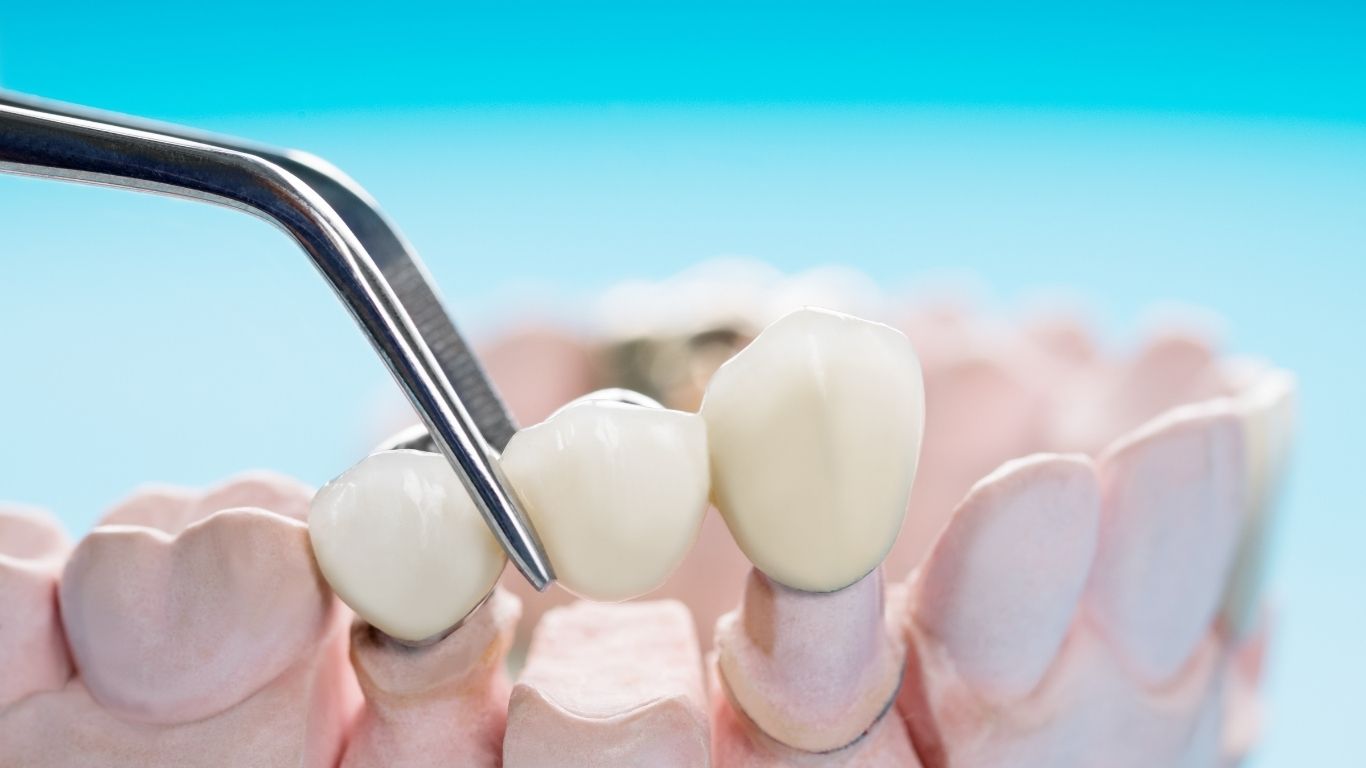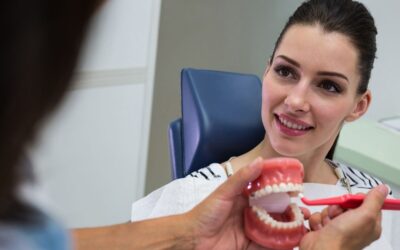Dental bridges are a popular choice for replacing missing teeth, helping restore both function and aesthetics to your smile. However, just like natural teeth, dental bridges are susceptible to stains. Over time, food, drinks, smoking, and even poor oral hygiene can cause discoloration. Knowing how to remove stains from dental bridges is essential for maintaining their appearance and ensuring they continue to look and function at their best.
In this article, we’ll explore effective methods to clean dental bridges, common mistakes to avoid, and tips to keep your smile shining bright.
What Causes Stains on Dental Bridges?
Before we dive into how to remove stains, it’s essential to understand why stains form on dental bridges in the first place. Just like your natural teeth, dental bridges can be discolored by various factors, including:
-
Dietary Habits: Certain foods and drinks, such as coffee, tea, red wine, and curry, can cause staining. These substances contain tannins and pigments that cling to the surface of your dental bridges.
-
Tobacco Use: Smoking or chewing tobacco can result in yellow or brown stains, which can be especially noticeable on the materials used for dental bridges.
-
Poor Oral Hygiene: If plaque and tartar accumulate on the dental bridge, they can attract more stains and discoloration. Not brushing and flossing regularly can lead to the buildup of these substances.
-
Age and Wear: Over time, the surface of your dental bridge may wear down slightly, making it more prone to staining. The natural wear and tear from chewing can also affect its appearance.
How Can I Effectively Remove Stains from Dental Bridges?
The good news is that there are several ways you can remove stains from your dental bridges and maintain their beauty. Here are some proven methods that work:
1. Brushing Your Dental Bridge Regularly
The first line of defense against staining is regular brushing. Just like natural teeth, dental bridges require cleaning twice a day. Use a non-abrasive toothbrush and fluoride toothpaste to gently brush your dental bridge and surrounding teeth. Make sure to brush in circular motions to avoid damaging the bridge.
-
Why this works: Brushing removes plaque and food particles that contribute to staining. It helps prevent the buildup of tartar, which can lead to more stubborn discoloration.
2. Use a Soft-Bristled Toothbrush
Using a soft-bristled toothbrush is essential when cleaning your dental bridge. Hard bristles can scratch the surface of the bridge, making it more prone to staining and damage. Look for a toothbrush that is specifically designed for dental work.
-
Why this works: A soft-bristled toothbrush is gentle on the bridge while still effectively removing plaque and debris. It also prevents scratches and grooves where stains can accumulate.
3. Try a Dental Bridge Cleaning Solution
For deeper cleaning, you can use a special dental bridge cleaner. These solutions are designed to clean both the surface and the inner parts of your bridge. They are gentle yet effective, helping to remove stains and odors caused by food, drink, and tobacco.
-
Why this works: Dental bridge cleaners are formulated to remove stubborn stains without damaging the bridge. They also help disinfect the bridge, ensuring it remains hygienic.
4. Use Baking Soda
Baking soda is a safe and effective way to remove surface stains from dental bridges. Create a paste by mixing baking soda with water and gently scrub the surface of the bridge using a soft toothbrush. Baking soda acts as a mild abrasive that lifts stains without damaging the bridge.
-
Why this works: Baking soda is mildly abrasive but won’t scratch the surface of the dental bridge. It helps to lift stains from the surface, leaving the bridge looking cleaner and brighter.
5. Hydrogen Peroxide Solution
Another effective method for cleaning dental bridges is hydrogen peroxide. You can use a diluted hydrogen peroxide solution (about 3% concentration) and gently apply it to the surface of the bridge. Use a soft toothbrush to scrub gently.
-
Why this works: Hydrogen peroxide is a natural disinfectant and bleaching agent that can help to remove stains and whiten the dental bridge. It also helps to kill bacteria and prevent oral infections.
How Can I Prevent Stains from Forming on My Dental Bridge?
Prevention is always better than cure, especially when it comes to stains on dental bridges. Here are some tips to help keep your dental bridge looking clean and free from stains:
1. Maintain Good Oral Hygiene
Brushing and flossing regularly are the best ways to prevent stains from forming on your dental bridge. Make sure to clean around the bridge carefully, as plaque can easily build up on the edges.
-
Why this works: Regular oral hygiene prevents plaque and bacteria buildup, which leads to staining. Flossing ensures that food particles are removed from between your bridge and natural teeth.
2. Avoid Staining Foods and Drinks
Try to limit your consumption of staining foods and drinks, such as coffee, tea, red wine, and berries. If you must indulge in them, consider rinsing your mouth with water afterward to minimize staining.
-
Why this works: Reducing your intake of staining substances will help prevent the buildup of pigment on your dental bridge.
3. Stop Smoking or Using Tobacco Products
Tobacco is one of the biggest culprits in staining dental work. If you want to keep your dental bridge looking clean and bright, consider quitting smoking or using tobacco products altogether.
-
Why this works: Quitting tobacco prevents the yellow and brown staining that occurs from the chemicals in tobacco. This will help your bridge maintain its natural color for longer.
4. Use a Mouthwash with Whitening Properties
Incorporating a mouthwash with whitening properties into your oral care routine can help reduce surface stains. Look for mouthwashes that are specifically designed to keep dental work clean.
-
Why this works: Whitening mouthwashes help to prevent staining and keep your dental bridge looking fresh. They can also help reduce plaque buildup and maintain oral hygiene.
What Are the Common Mistakes People Make When Cleaning Their Dental Bridges?
When it comes to cleaning dental bridges, there are a few common mistakes that can worsen the situation. Here are some of the most frequent errors and how to avoid them:
1. Using Abrasive Products
While baking soda is mild, some people make the mistake of using overly abrasive materials, like hard brushes or harsh cleaning products. This can scratch the surface of your dental bridge and make it more susceptible to staining.
-
How to avoid it: Always use soft-bristled brushes and non-abrasive cleaning products designed for dental work.
2. Not Flossing Around the Bridge
Flossing around your dental bridge is just as important as brushing it. Failing to floss can result in plaque and food buildup around the bridge, leading to discoloration and potential gum issues.
-
How to avoid it: Be sure to floss carefully around the edges of your bridge, using dental floss or special bridge floss designed for this purpose.
3. Skipping Regular Dental Checkups
Even with the best at-home care, it’s important to visit your dentist regularly for professional cleanings. Skipping checkups can lead to plaque buildup that can cause stains and damage your dental bridge.
-
How to avoid it: Schedule regular dental visits to ensure that your dental bridge remains clean and well-maintained.
How Long Do Dental Bridges Last, and How Can I Extend Their Lifespan?
Dental bridges are designed to be durable and can last anywhere from 5 to 15 years, depending on the materials used and how well you care for them. To extend the lifespan of your dental bridge and keep it free from stains:
-
Follow the cleaning methods outlined above.
-
Avoid using your dental bridge to chew hard foods, which can cause wear.
-
Get regular dental checkups and professional cleanings.
By maintaining proper care and attention, you can keep your dental bridge looking like new for years to come.
Conclusion
Knowing how to remove stains from dental bridges is essential for keeping them in excellent condition. Regular cleaning, proper oral hygiene, and taking preventative measures will help ensure your bridge remains stain-free and maintains its natural appearance. By following these tips, you can enjoy a bright, healthy smile for years to come.



